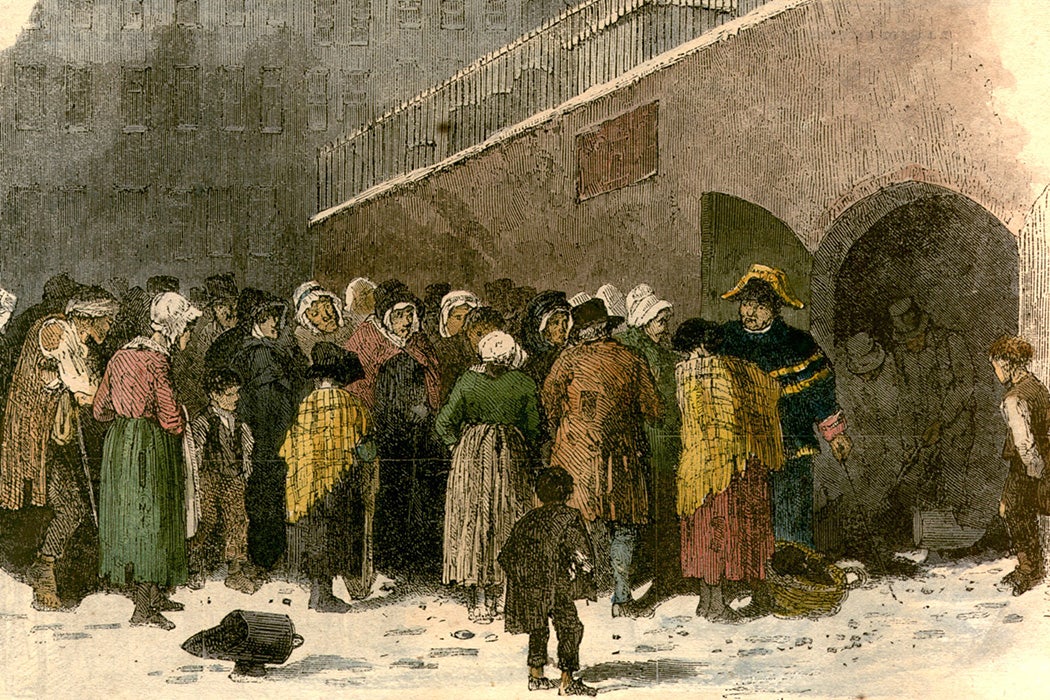For many English people in the early nineteenth century, an important part of Christmas was a big holiday meal for the poor. But, as historian Nadja Durbach writes, in the 1830s, this tradition ran afoul of new efforts to minimize the use of government benefits.
Durbach notes that the English hadn’t always celebrated Christmas with festivities—Puritans banned the practice in the seventeenth century, for example—but Victorians understood feasting the poor as a national tradition with roots in ancient Anglo-Saxon society. Charles Dickens’s A Christmas Carol, published in 1843, reflected a broad understanding of Christmas as a time of domestic togetherness, hospitality, and generosity. Some also viewed holiday charity as a way to soften the edges of class conflict and draw the nation together.
A charitable meal of roast beef and plum pudding, food closely identified with English identity, was a perfect vehicle for this. Members of the nobility provided Christmas dinner to their tenants and workers. And, under the “Old Poor Law,” the system of public charity operating through the 1820s, so did public institutions.
Durbach writes that this changed abruptly with the passage of the “New Poor Law” in the 1830s. This legislation required all “able-bodied” people who needed assistance to live in workhouses, where they engaged in hard labor in exchange for food and shelter. These were explicitly designed to be unpleasant places in order to make them less appealing than the miserable conditions endured by many privately employed working-class people .
One way of ensuring this was standardized rules about the food to be served. These limited the amount of food to what authorities deemed nutritionally necessary. Certain foods were explicitly forbidden, including fruit, sweets, alcohol—and Christmas meals. The Poor Law Commission (PLC) specifically insisted that workhouses were not to offer their residents roast beef and plum pudding, warning that this might make workhouse life “temporarily less unattractive than under ordinary circumstances.”
Local workhouse administrators pushed back against the new rules. Durbach writes that one reason for this disagreement was that, seen up close, the residents of workhouses were often not healthy young men but orphans, widows, and older and disabled people—part of the “deserving” rather than “undeserving” poor. Another was the paternalistic custom that dictated that the poor were “entitled to” roast beef, plum pudding, and ale at Christmas.
Weekly Newsletter
Some paupers also lodged their own objections. In 1839, thirty-six men at one poorhouse petitioned local authorities to offer “Old English Fare” on Christmas Day, though they were unsuccessful.
But all this pushback gradually saw results. In 1840, the PLC acknowledged that “many persons” wished “to extend to others the enjoyments which have been immemorially connected” to Christmas. It allowed workhouses to offer holiday meals—provided they were paid for with private donations. Some local authorities quietly ignored that provision, illegally paying for the holiday meals from their general funds. By the 1850s, the central authorities mostly walked back the holiday meal ban, acknowledging that even paupers had the right to take part in the English celebration of Christmas.
Support JSTOR Daily! Join our membership program on Patreon today.







